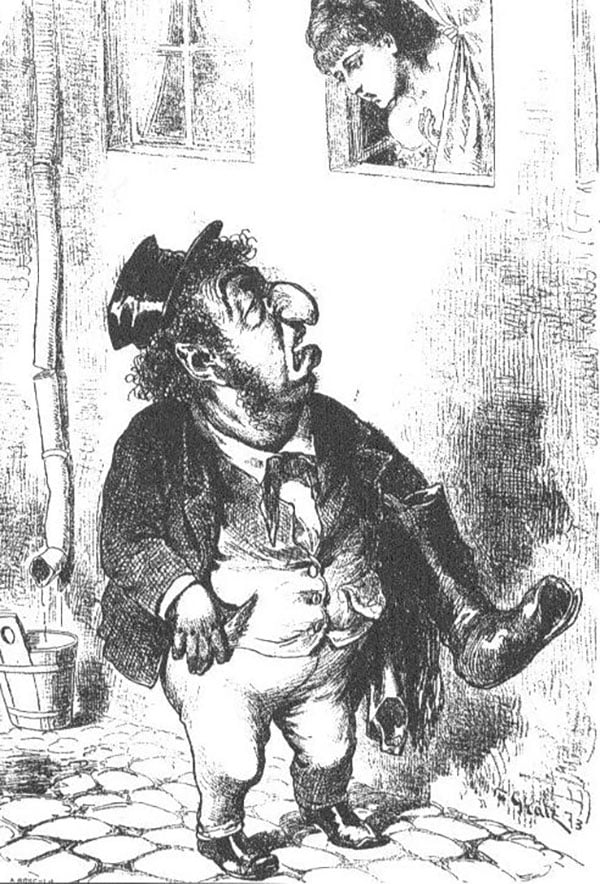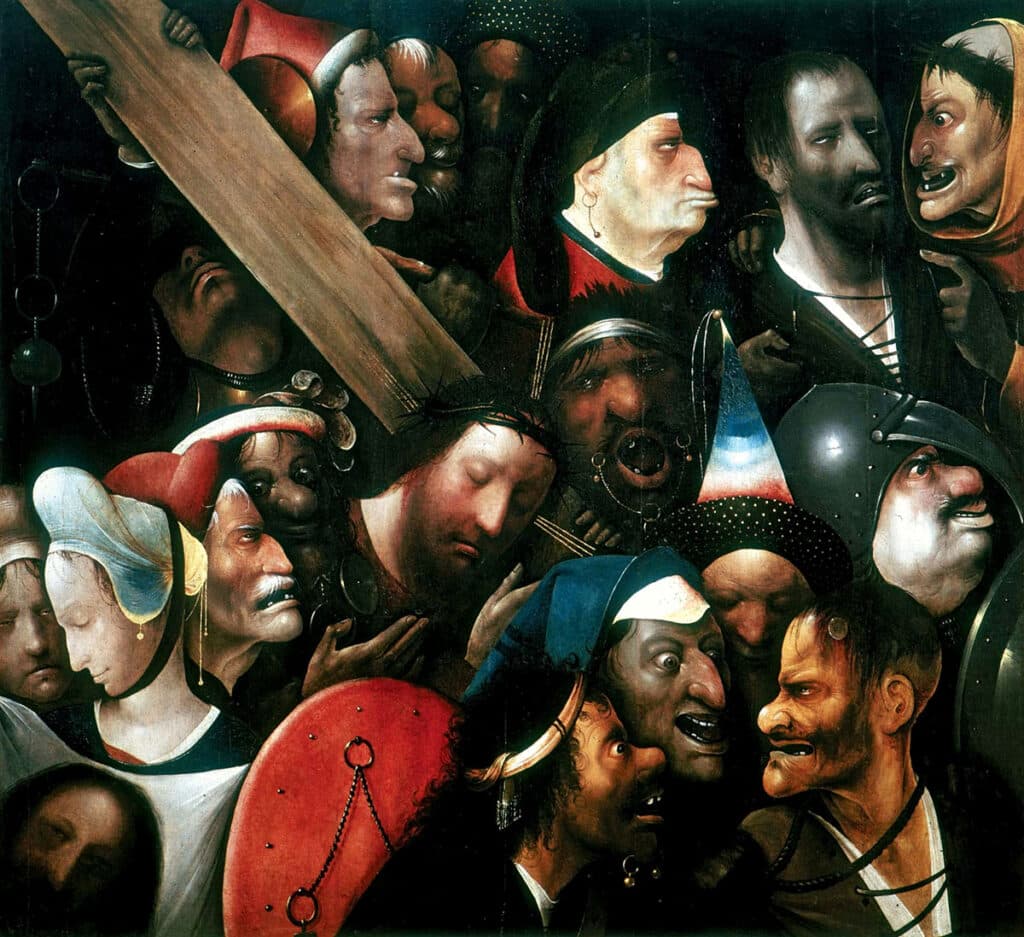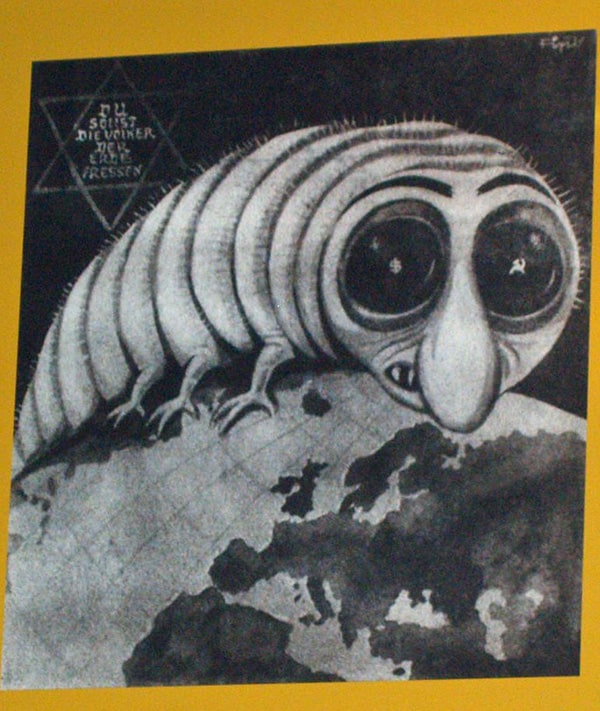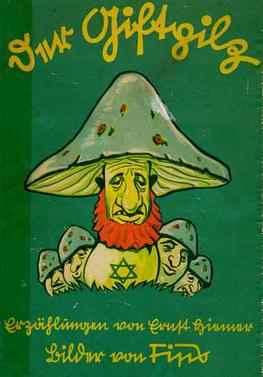A common meme among antisemitic trolls shows a balding, bearded man sporting a yarmulke and greedily rubbing his hands together. Dominating his face is a bumpy, sloping, almost comically oversized nose. This is the “happy merchant” — an innocuous name for the latest iteration of an ancient antisemitic trope: the big Jewish nose.

But where does this hateful depiction of the hook-nosed Jew come from? And why has this meme persisted for the better part of a millennium?
Do some Jews have big noses?
Sure. Some do. Jews are people. And since people come in all shapes, sizes, and colors, yeah, some have big noses.
But do Jews have unusually big noses? Noses that are significantly bigger than those of other people?
In an effort to prove once and for all whether Jews have big noses, a New York-based anthropologist found 4,000 Jews willing to have their features measured. His research found that Jews didn’t have significantly larger noses than any other group within the broader American population.
More recent studies suggest that like many other physical features, the shape and appearance of our noses are a product of geographic origin and adaptation — meaning, the way your nose looks might depend on where you come from.
Many Jews have Middle Eastern origins, which means that many of us have noses that look similar to other Middle Eastern peoples. But the Middle East is wildly diverse, which means that Middle Easterners — like Jews — have noses of all shapes and sizes.
And yet the myth of the huge Jewish schnoz endures — particularly among antisemites. Why? And why caricaturize Jewish noses, of all things?
The myth of Jewish noses
A thousand years after Jesus’ crucifixion, devout Christian artists were looking for the best way to represent Jesus’ life and death — which they happened to blame on the Jews. Inconveniently, Jesus just happened to be a Jew himself.
They differentiated the one “good Jew” in the story from the “bad Jews” by making them as ugly as possible with absurdly oversized noses and beady little eyes. In fact, lots of other undesirables — like witches — get a similar treatment. They are depicted with pointy hats, warty noses, and eating kids. These tropes are all rooted in antisemitic stereotypes, courtesy of medieval Christian artists.

This ugly caricature caught on and soon spread through Europe. It shows up in the 13th-century picture Bible commissioned by Blanche of Castile — AKA the mother of King Louis IX. Like lots of medieval illuminated manuscripts, this one is a work of art — except for the illustration of a handsome Jesus being whipped by his enemies, one sporting a recognizably prominent nose.
But it gets worse. This Hieronymus Bosch painting from the early 1500s shows Jesus carrying the cross surrounded by what looks like a bunch of goblins. But Bosch wasn’t illustrating some work of fantasy — that was his depiction of Jews.

Worst of all, these kinds of illustrations often accompanied blood libels — the old canard that Jews kill Christian children and use their blood in all sorts of dark rituals. These trumped-up charges often led to torture and death for a town’s Jews. Behold the power of propaganda.
If stereotypes are repeated enough times, even people who should know better start to believe that they’re true.
By the late 1800s, nose-consciousness had seeped into European Jewish communities. A doctor in Berlin responded to the moment by picking up his scalpel and pioneering the field of rhinoplasty. Most of his clientele were Jewish men and women hoping to blend in, or “pass” as non-Jewish, internalizing and succumbing to these ugly stereotypes.
Nazism and anti-Jewish propaganda
The rise of Nazism gave the stereotype of the Jewish nose its most pernicious update. Among other atrocities, Nazi pseudo-doctors “developed” a fake science of the study of Jewish skull sizes, skeletons, and especially noses.
This coincided with the release of a staggering amount of Nazi propaganda depicting swarthy big-nosed threats, including the Jew as snake, maggot, vulture, and rodents.

The Jewish nose even made it into Nazi children’s literature. “One can most easily tell a Jew by his nose,” wrote Nazi propagandist Julius Streicher in a kid’s story called “The Poisonous Mushroom.” “The Jewish nose is bent at its point. It looks like the number six. We call it the ‘Jewish six.’”

Unfortunately, this trope didn’t die with the Third Reich. It’s just been updated for the modern day. In 2020, Italian painter Giovanni Gasparro unveiled his take on the blood libel. It’s just as nuanced and charming as you might imagine: demonic-looking Jews cackling in glee as they torture an innocent little cherub to death.
Even the 2023 Oscar winner for best picture, “Everything Everywhere All At Once,” has a Jewish character in it simply called “Big Nose.” Jenny Slate, a Jewish actress, plays the role. The film’s directors have acknowledged this apparent oversight and apologized.
This brings us full circle to the hideous so-called happy merchant. It’s no surprise that online trolls have adapted antisemitic visuals for the meme era.
Sure, Jews have survived two millennia of exile and persecution, not to mention a genocide or two. But like the Jewish people, antisemitism is uniquely enduring.
Over the centuries, its visuals have evolved to stay relevant with the changes in media dissemination and consumption. This is why it’s paramount to talk about those visuals, explain their origins, and reveal them for what they are: hateful depictions that promote lies and cause pain.
